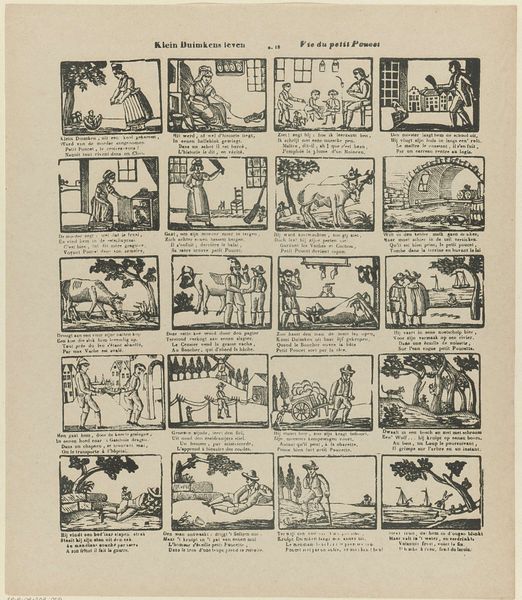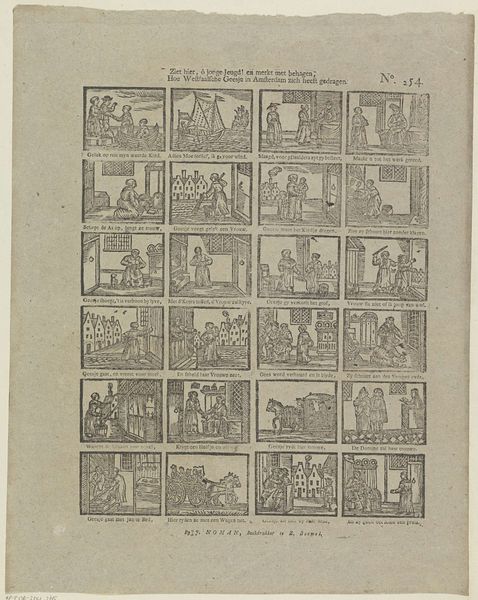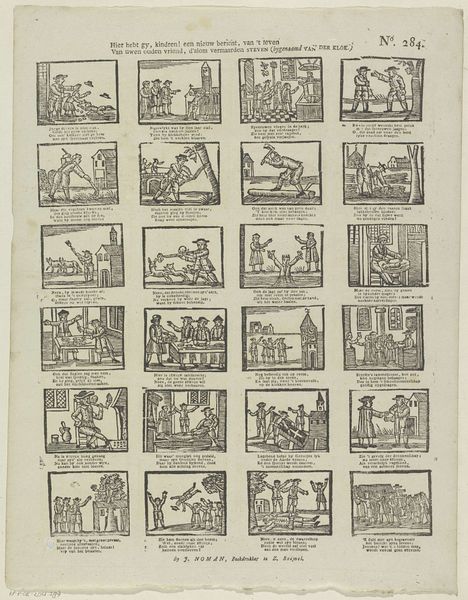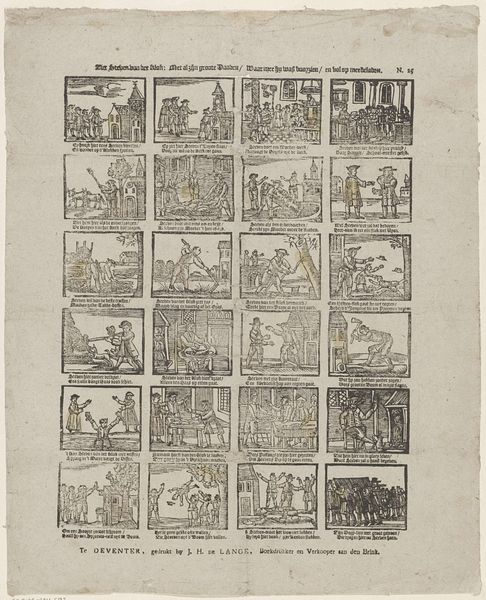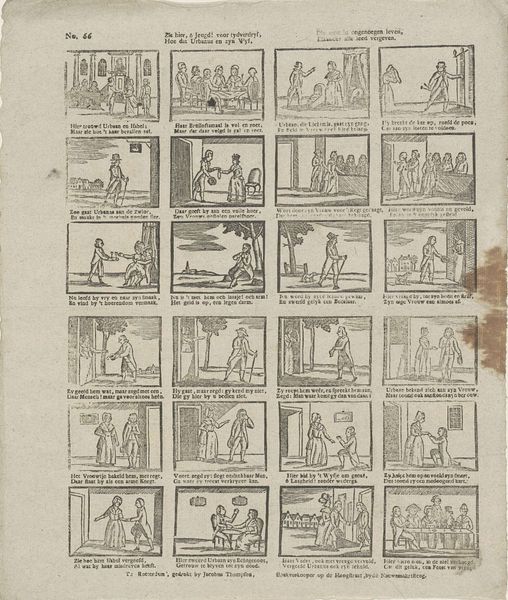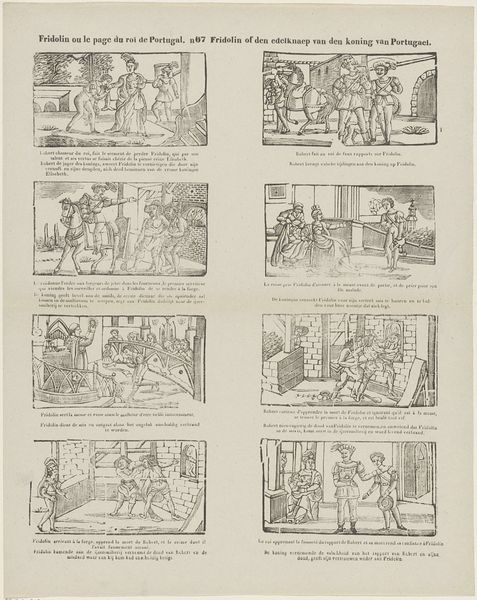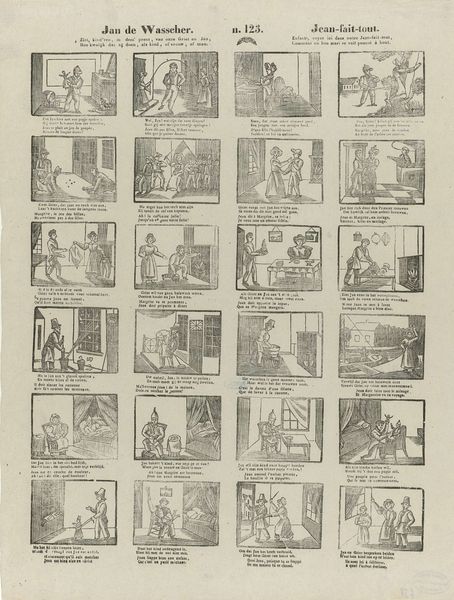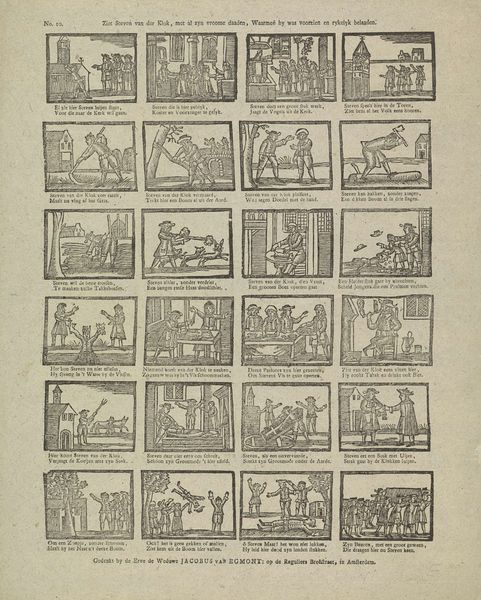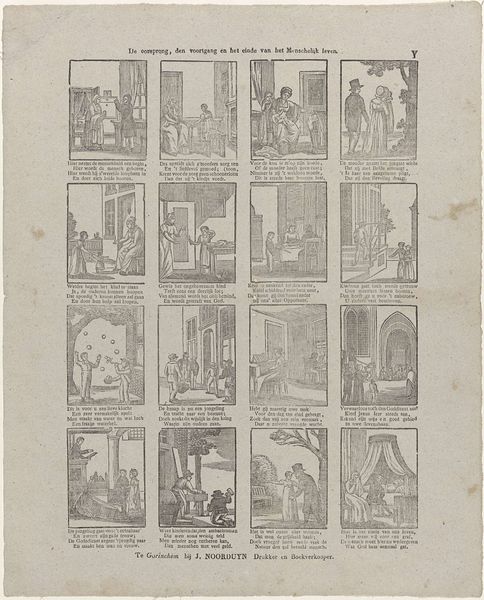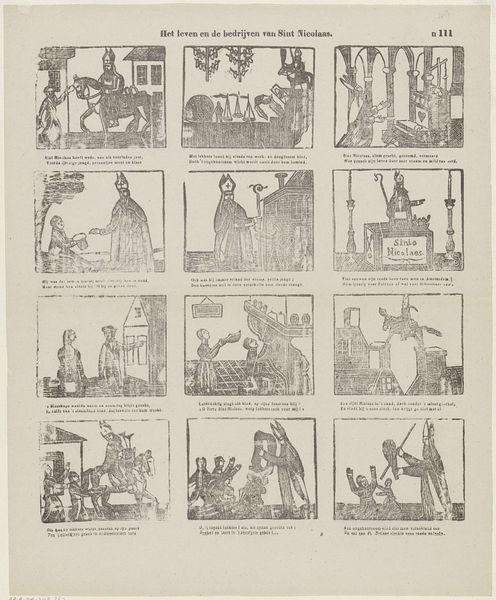
Voorstelling der ontvlugting van den zeer beroemden Hugo Grotius of Hugo de Groot (...) 1820 - 1838
0:00
0:00
print, engraving
#
aged paper
#
narrative-art
#
dutch-golden-age
# print
#
old engraving style
#
sketch book
#
personal sketchbook
#
sketchwork
#
pen-ink sketch
#
pen work
#
sketchbook drawing
#
history-painting
#
storyboard and sketchbook work
#
sketchbook art
#
engraving
Dimensions: height 404 mm, width 329 mm
Copyright: Rijks Museum: Open Domain
This print, made by Christiaan Jacob Schuyling, depicts the escape of Hugo Grotius. The image is an etching, a printmaking technique that relies on the corrosive action of acid to create lines in a metal plate. The linear quality of the image results directly from this method. Schuyling would have coated a metal plate with a waxy, acid-resistant substance, then scratched away lines with a sharp needle, exposing the metal. When immersed in acid, these exposed lines would be eaten away, creating grooves that hold ink. The plate would then be inked, wiped clean, and pressed onto paper, transferring the image. Because the process is relatively labor intensive, prints like this were often produced in multiples, making images and information accessible to a wider audience. This piece provides insight into the methods of visual storytelling and information dissemination prevalent in the early 19th century. The print's reliance on clear, sequential imagery highlights the value placed on accessible narratives during this period.
Comments
No comments
Be the first to comment and join the conversation on the ultimate creative platform.
